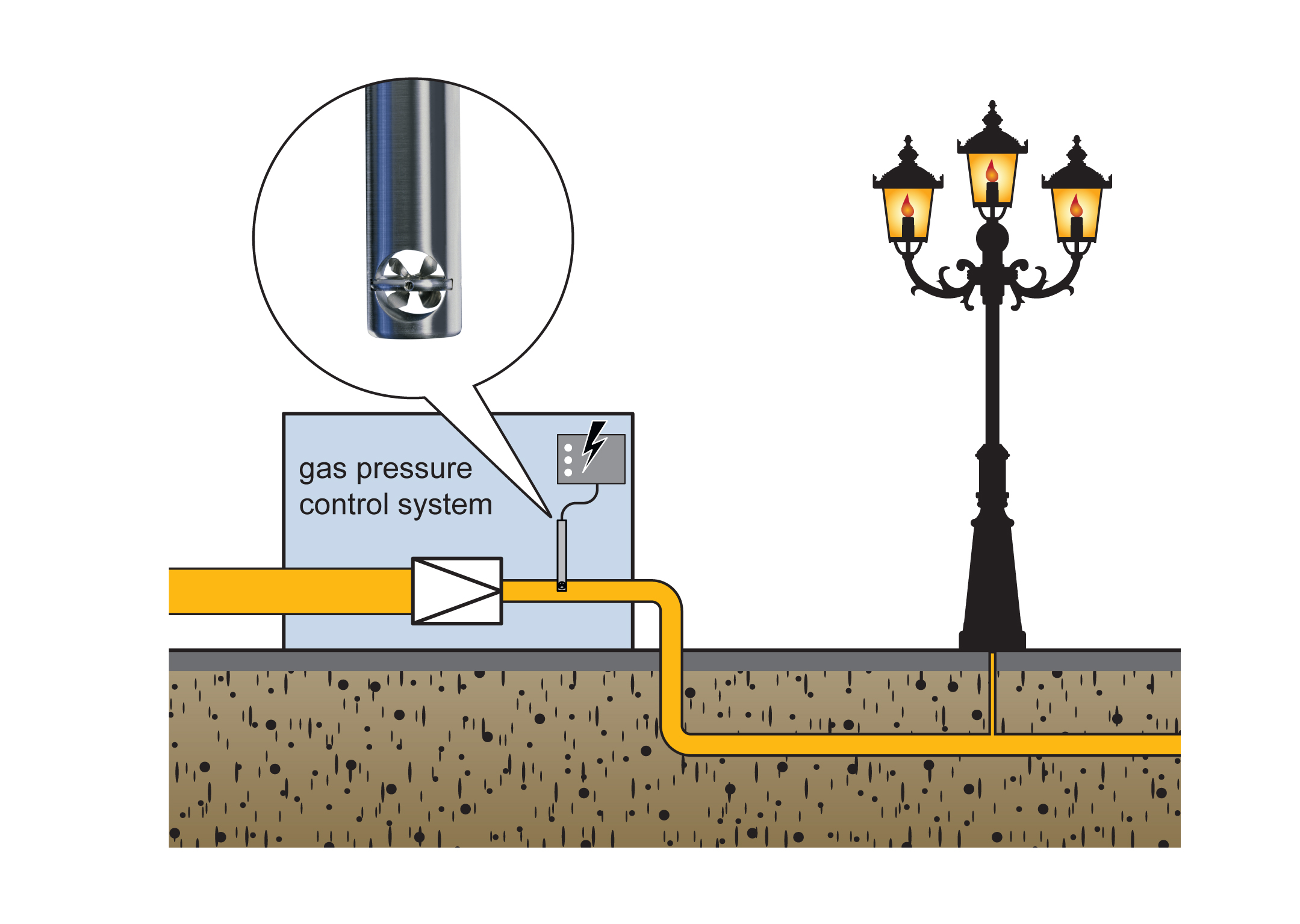Process data
Measuring task:
Flow rate from supplying gas lights to street lights
Measuring point:
Gas pressure regulation station
Measuring range:
Up to 1,000 m³/h
Process pressure:
Ca. 40 mbar
Process environment:
+5 … 40 °C
Application
The streets in Düsseldorf are illuminated with electrical lights and gas lights. Each gas light’s supply comes from gas pipes from gas pressure throttling stations. The lights are ignited by a defined pressure surge which has a defined pressure level and flow rate. This flow rate can be measured and monitored with Höntzsch measuring instruments. It’s the only way to guarantee a safe ignition process.
Your advantage
Tried and tested
Since 2006 Höntzsch vane wheel sensors type ZS25 have been used in this application
Precise
The sensor’s very low measuring uncertainty ensures reliable set-up of the gas lights and therefore the lighting.
Aesthetics
The used measuring technology also contributes to the preservation of the historical cityscape with gas lights.
Recommended products
Vane wheel ZS25 ZG2
Product Product data sheet
With isolation / supply unit and separate evaluation unit








